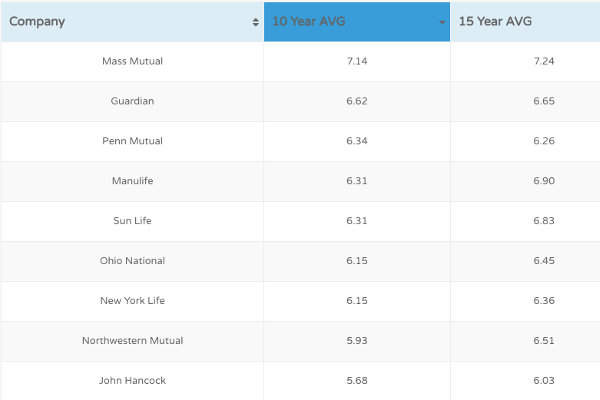In the world of whole life insurance, one of the most intriguing aspects that both policyholders and potential buyers often overlook is the relationship between interest rates and whole life insurance dividend rates. Understanding this relationship is critical for anyone seeking to maximize the benefits of their policy. With a focus on the intricacies of how interest rates influence dividend rates, this article will delve into the nuances that can affect your financial future and help you make informed decisions about your whole life insurance.
The whole life insurance dividend rates are determined by the profitability of the insurance company and the overall economic environment. When policyholders invest in a whole life policy, they are essentially participating in the company's profit-sharing plan. The dividends can be used in several ways: they can be taken as cash, used to reduce premiums, or reinvested into the policy to increase the cash value. Understanding how interest rates play a role in this equation can help policyholders make more strategic choices regarding their whole life insurance.
Investment Portfolio: Insurance companies typically invest the premiums they collect from policyholders in a diversified portfolio that may include bonds, stocks, and real estate. The returns from these investments contribute to the overall profitability of the company. Higher interest rates can lead to better returns on fixed-income investments like bonds, which are a substantial part of most insurance companies' portfolios. This increased profitability can result in higher dividends for policyholders.
Cost of Insurance: The cost of providing whole life insurance can also be affected by interest rates. When rates are low, the companies may have to allocate more resources to cover the cost of insurance, which can limit the funds available for dividends. On the other hand, higher interest rates can provide a buffer, allowing companies to offer more attractive dividend rates.
During periods of rising interest rates, such as those experienced in the late 20th century, many policyholders saw a corresponding increase in their dividend rates. This trend illustrates how an improving economic environment can translate to better returns for insurance companies, subsequently benefiting policyholders. However, the opposite is true during economic downturns when interest rates are lowered to stimulate growth, leading to reduced dividend rates in many cases.
Cash Value Growth: One significant advantage of whole life insurance is the growth of cash value over time. When dividend rates fluctuate, they can impact how quickly this cash value accumulates. Higher dividends can enhance the cash value, providing policyholders with more financial flexibility and options for borrowing against their policy or accessing funds in emergencies.
Premium Payments: Another critical consideration is the effect of dividends on premium payments. Policyholders have the option to use their dividends to reduce future premium payments. When dividend rates are high, policyholders may find themselves in a position to lower their out-of-pocket expenses significantly. Conversely, during periods of lower dividends, they may need to reassess their budget and financial planning.
Retirement Planning: For many individuals, whole life insurance serves as an essential part of their retirement planning strategy. The dividends can be a valuable source of supplemental income during retirement years. Thus, understanding the dynamics of interest rates and their impact on dividend rates can be crucial for effective retirement planning.
Regular Monitoring: Staying informed about economic trends and interest rate movements can help policyholders anticipate changes in their dividend rates. Regularly reviewing policy performance and dividends can lead to better financial decision-making.
Reinvesting Dividends: Many policyholders choose to reinvest dividends back into their policies. This approach can enhance the cash value growth and provide more substantial benefits in the long run, especially during times of favorable interest rates.
Consulting Experts: Navigating the complexities of whole life insurance and dividend rates can be challenging. Policyholders should consider consulting with insurance experts who can provide personalized advice based on individual circumstances and long-term financial goals.
At Top Whole Life, we are dedicated to helping you navigate the complexities of whole life insurance. Whether you are looking to compare policies, understand dividend rates, or find expert advice, we are here to assist you in achieving your financial goals.
Understanding Whole Life Insurance and Dividend Rates
Whole life insurance is a type of permanent life insurance that provides coverage for the insured's entire lifetime, as long as premiums are paid. One of the significant features of whole life policies is the dividend component. Dividends are not guaranteed, but many mutual insurance companies pay them to policyholders based on the company's financial performance, which is influenced by several factors, including interest rates.The whole life insurance dividend rates are determined by the profitability of the insurance company and the overall economic environment. When policyholders invest in a whole life policy, they are essentially participating in the company's profit-sharing plan. The dividends can be used in several ways: they can be taken as cash, used to reduce premiums, or reinvested into the policy to increase the cash value. Understanding how interest rates play a role in this equation can help policyholders make more strategic choices regarding their whole life insurance.
How Interest Rates Influence Whole Life Insurance Dividend Rates
Interest rates are a fundamental factor affecting the economy at large, but their influence extends into the realm of life insurance as well. When interest rates rise, insurance companies benefit from higher returns on their investments, which can positively impact dividend rates. Conversely, when interest rates fall, the income generated from investments may decline, putting downward pressure on the dividends that policyholders receive.Investment Portfolio: Insurance companies typically invest the premiums they collect from policyholders in a diversified portfolio that may include bonds, stocks, and real estate. The returns from these investments contribute to the overall profitability of the company. Higher interest rates can lead to better returns on fixed-income investments like bonds, which are a substantial part of most insurance companies' portfolios. This increased profitability can result in higher dividends for policyholders.
Cost of Insurance: The cost of providing whole life insurance can also be affected by interest rates. When rates are low, the companies may have to allocate more resources to cover the cost of insurance, which can limit the funds available for dividends. On the other hand, higher interest rates can provide a buffer, allowing companies to offer more attractive dividend rates.
Historical Context and Trends in Whole Life Dividend Rates
To grasp the impact of interest rates on whole life insurance dividend rates, it is essential to look at historical trends. Over the past few decades, the financial landscape has undergone significant changes, particularly with the fluctuation of interest rates. For instance, the low-interest-rate environment that characterized much of the last decade forced many insurance companies to adjust their dividend policies.During periods of rising interest rates, such as those experienced in the late 20th century, many policyholders saw a corresponding increase in their dividend rates. This trend illustrates how an improving economic environment can translate to better returns for insurance companies, subsequently benefiting policyholders. However, the opposite is true during economic downturns when interest rates are lowered to stimulate growth, leading to reduced dividend rates in many cases.
Implications of Fluctuating Dividend Rates for Policyholders
The fluctuations in whole life insurance dividend rates have several implications for policyholders. Understanding these effects can empower individuals to make the most of their whole life insurance policies.Cash Value Growth: One significant advantage of whole life insurance is the growth of cash value over time. When dividend rates fluctuate, they can impact how quickly this cash value accumulates. Higher dividends can enhance the cash value, providing policyholders with more financial flexibility and options for borrowing against their policy or accessing funds in emergencies.
Premium Payments: Another critical consideration is the effect of dividends on premium payments. Policyholders have the option to use their dividends to reduce future premium payments. When dividend rates are high, policyholders may find themselves in a position to lower their out-of-pocket expenses significantly. Conversely, during periods of lower dividends, they may need to reassess their budget and financial planning.
Retirement Planning: For many individuals, whole life insurance serves as an essential part of their retirement planning strategy. The dividends can be a valuable source of supplemental income during retirement years. Thus, understanding the dynamics of interest rates and their impact on dividend rates can be crucial for effective retirement planning.
How Interest Rates Affect Whole Life Insurance Dividend Fluctuations!
Click below to get a Quote Now!
Get Me A QuoteStrategic Considerations for Whole Life Insurance Policyholders
Given the intricate relationship between interest rates and whole life insurance dividend rates, policyholders should consider strategic approaches to manage their policies effectively. Here are several key strategies to keep in mind:Regular Monitoring: Staying informed about economic trends and interest rate movements can help policyholders anticipate changes in their dividend rates. Regularly reviewing policy performance and dividends can lead to better financial decision-making.
Reinvesting Dividends: Many policyholders choose to reinvest dividends back into their policies. This approach can enhance the cash value growth and provide more substantial benefits in the long run, especially during times of favorable interest rates.
Consulting Experts: Navigating the complexities of whole life insurance and dividend rates can be challenging. Policyholders should consider consulting with insurance experts who can provide personalized advice based on individual circumstances and long-term financial goals.
Conclusion
The impact of interest rates on whole life insurance dividend rates is a crucial consideration for anyone looking to optimize their whole life insurance policy. By understanding how these rates fluctuate and the implications for cash value growth, premium payments, and retirement planning, policyholders can make informed decisions that align with their financial objectives. As economic conditions change, so too will the landscape of whole life insurance dividends. Staying proactive, monitoring market trends, and seeking expert advice can empower individuals to harness the full potential of their whole life insurance policies, ensuring they reap the benefits for years to come.At Top Whole Life, we are dedicated to helping you navigate the complexities of whole life insurance. Whether you are looking to compare policies, understand dividend rates, or find expert advice, we are here to assist you in achieving your financial goals.




